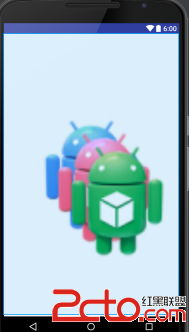1、Introduced in Android 3.0, loaders make it easy to asynchronously load data in an activity or fragment. Loaders have these characteristics:
They are available to every Activity and Fragment.
They provide asynchronous loading of data.
They monitor the source of their data and deliver new results when the content changes.
They automatically reconnect to the last loader's cursor when being recreated after a configuration change. Thus, they don't need to re-query their data.
2、重要的類及接口
LoaderManager An abstract class associated with an Activity or Fragment for managing one or more Loader instances. This helps an application manage longer-running operations in conjunction with the Activity orFragment lifecycle; the most common use of this is with a CursorLoader, however applications are free to write their own loaders for loading other types of data.
There is only one LoaderManager per activity or fragment. But aLoaderManager can have multiple loaders.
LoaderManager.LoaderCallbacks A callback interface for a client to interact with the LoaderManager. For example, you use the onCreateLoader() callback method to create a new loader.
Loader An abstract class that performs asynchronous loading of data. This is the base class for a loader. You would typically use CursorLoader, but you can implement your own subclass. While loaders are active they should monitor the source of their data and deliver new results when the contents change.
AsyncTaskLoader Abstract loader that provides an AsyncTask to do the work.
CursorLoader A subclass of AsyncTaskLoader that queries the ContentResolver and returns a Cursor. This class implements the Loader protocol in a standard way for querying cursors, building on AsyncTaskLoader to perform the cursor query on a background thread so that it does not block the application's UI. Using this loader is the best way to asynchronously load data from a ContentProvider, instead of performing a managed query through the fragment or activity's APIs. 3、一般在以下情況使用Loader:
This section describes how to use loaders in an Android application. An application that uses loaders typically includes the following:
An Activity or Fragment.
An instance of the LoaderManager.
A CursorLoader to load data backed by a ContentProvider. Alternatively, you can implement your own subclass of Loader or AsyncTaskLoader to load data from some other source.
An implementation for LoaderManager.LoaderCallbacks. This is where you create new loaders and manage your references to existing loaders.
A way of displaying the loader's data, such as a SimpleCursorAdapter.
A data source, such as a ContentProvider, when using a CursorLoader.
 Android中的數據存取和IO (第一篇)
Android中的數據存取和IO (第一篇)
 Android 透明式系統欄設計
Android 透明式系統欄設計
 Android入門——Drawable與對應的資源xml的應用
Android入門——Drawable與對應的資源xml的應用
 仿約會吧應用詳情頁,評論欄隨Recyclerview滑動左右移動
仿約會吧應用詳情頁,評論欄隨Recyclerview滑動左右移動